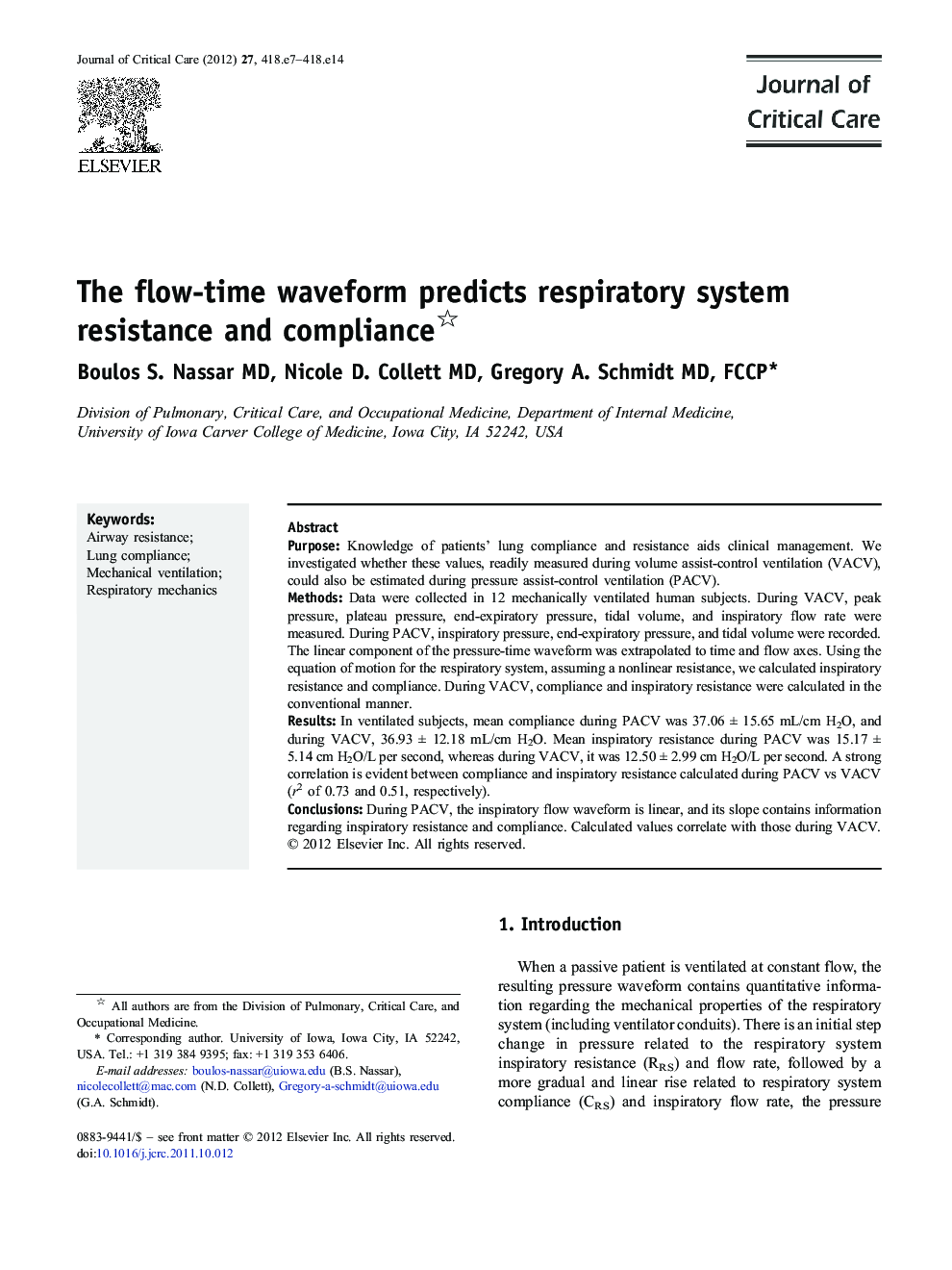| Article ID | Journal | Published Year | Pages | File Type |
|---|---|---|---|---|
| 5886973 | Journal of Critical Care | 2012 | 8 Pages |
PurposeKnowledge of patients' lung compliance and resistance aids clinical management. We investigated whether these values, readily measured during volume assist-control ventilation (VACV), could also be estimated during pressure assist-control ventilation (PACV).MethodsData were collected in 12 mechanically ventilated human subjects. During VACV, peak pressure, plateau pressure, end-expiratory pressure, tidal volume, and inspiratory flow rate were measured. During PACV, inspiratory pressure, end-expiratory pressure, and tidal volume were recorded. The linear component of the pressure-time waveform was extrapolated to time and flow axes. Using the equation of motion for the respiratory system, assuming a nonlinear resistance, we calculated inspiratory resistance and compliance. During VACV, compliance and inspiratory resistance were calculated in the conventional manner.ResultsIn ventilated subjects, mean compliance during PACV was 37.06 ± 15.65 mL/cm H2O, and during VACV, 36.93 ± 12.18 mL/cm H2O. Mean inspiratory resistance during PACV was 15.17 ± 5.14 cm H2O/L per second, whereas during VACV, it was 12.50 ± 2.99 cm H2O/L per second. A strong correlation is evident between compliance and inspiratory resistance calculated during PACV vs VACV (r2 of 0.73 and 0.51, respectively).ConclusionsDuring PACV, the inspiratory flow waveform is linear, and its slope contains information regarding inspiratory resistance and compliance. Calculated values correlate with those during VACV.
